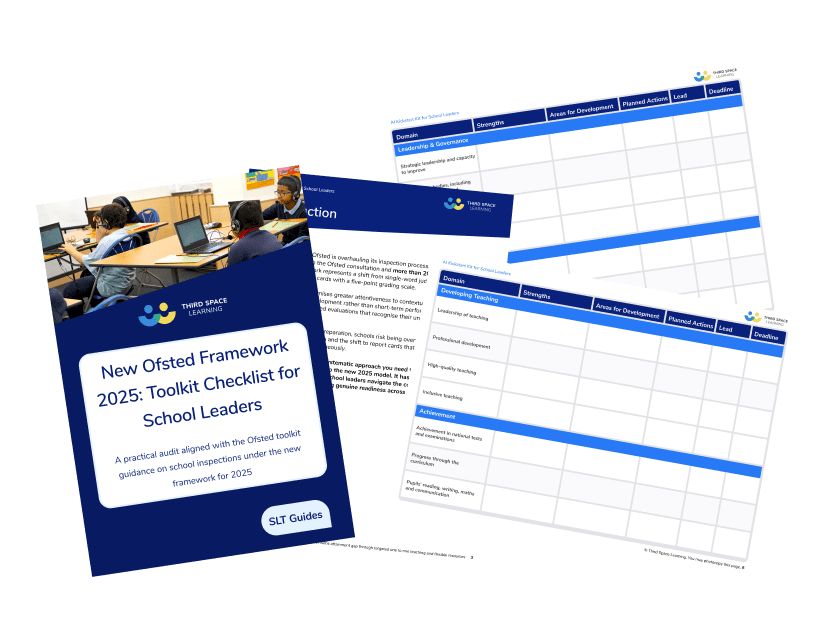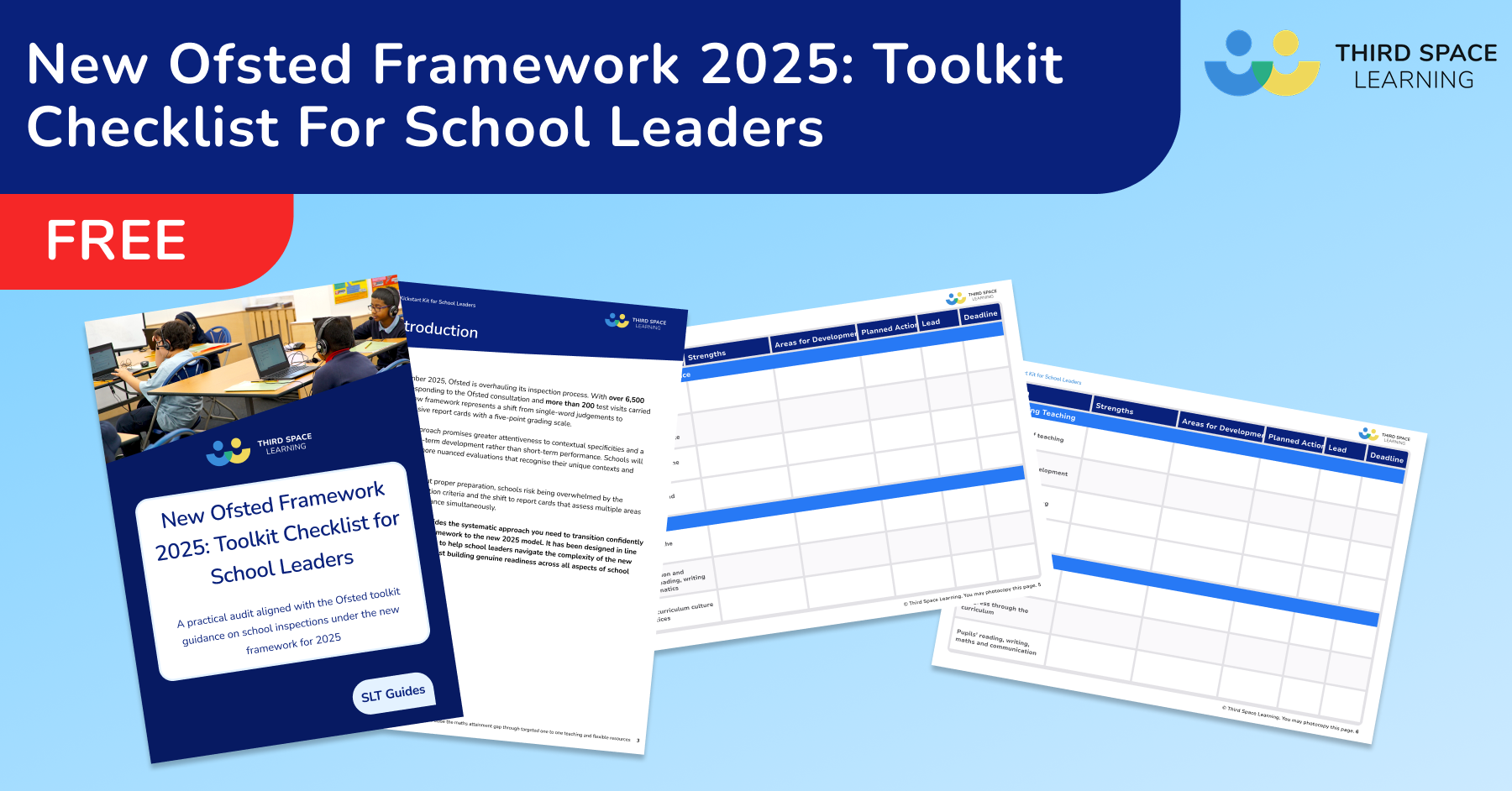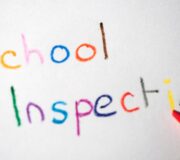Ofsted Ratings and Reports: New Ofsted Judgements Explained for Teachers & School Leaders
This article was originally published on 17th June 2024. Ofsted has recently released its new Ofsted framework 2025, which uses a new set of descriptors.
Ofsted ratings are set to change. While schools previously received single headline grades to determine their performance, as of September 2024 this is no longer the case.
Overall single headline grades or single-word Ofsted judgements have been scrapped with immediate effect for state schools. Sub-category judgements will remain, but until the introduction of report cards in 2025, schools have many questions.
This article will answer questions about scrapping single-word judgments and Ofsted ratings in more depth, including what Ofsted ratings tell you. What goes on at a school Ofsted inspection? And, what lies behind a school’s Ofsted rating?
What are Ofsted ratings?
Ofsted ratings, or Ofsted grades, are a single-word judgement given to each education provider receiving a graded school inspection. These ratings help hold schools accountable for the education and care they provide to children.
Up until September 2024, schools received a single headline grade. Schools could receive an Ofsted rating of:
- Outstanding
- Good
- Requires Improvement
- Inadequate
New Ofsted Framework 2025: Toolkit Checklist
A practical audit aligned with the Ofsted toolkit guidance on school inspections under the new framework for 2025. Includes an actionable checklist.
Download Free Now!Why are Ofsted ratings changing?
Previously, Ofsted grades were based on inspectors’ judgements across four Ofsted sub-categories, as set out in their Education Inspection Framework 2019. These sub-categories include:
- Quality of education
- Behaviour and attitudes
- Personal development of pupils
- Leadership and management
Each school then received an overall single headline grade. This may be beneficial to outstanding schools but less so to schools rated as inadequate.
Ofsted now recognises that single-word judgements aren’t working for parents or schools. In one survey, Ofsted found less than four in 10 parents and a mere 29% of teachers support single-word judgements.
It takes more than one word to give a complete picture of how a school is performing.
Ofsted reported wanting to raise standards in schools. They plan to do so by introducing report cards which will go into depth across a broader range of measures such as how staff members answer Ofsted’s safeguarding questions.
What do the new report cards look like?
According to Ofsted, report cards will provide a more complete picture of how schools perform. Report cards are set to take effect from September 2025. Ofsted has vowed to make them as clear and transparent as possible for everyone involved.
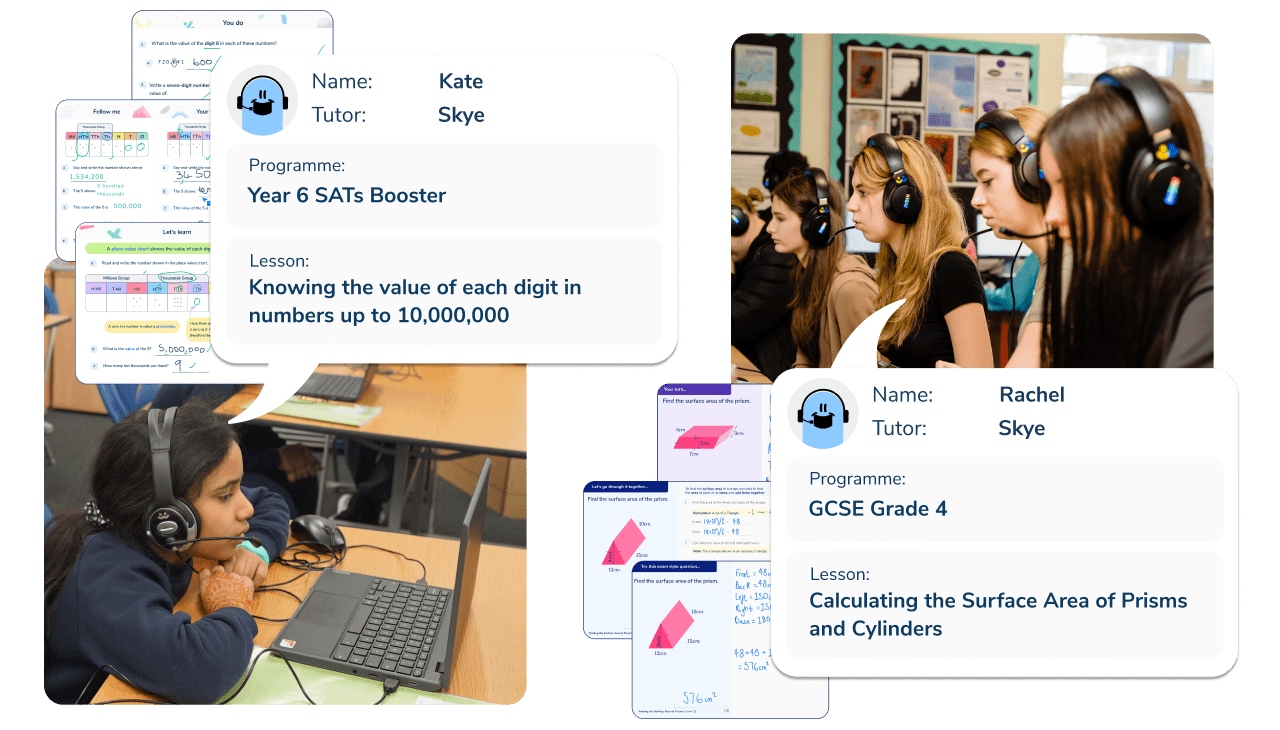
Meet Skye, the voice-based AI tutor making maths success possible for every student.
Built by teachers and maths experts, Skye uses the same pedagogy, curriculum and lesson structure as our traditional tutoring.
But, with more flexibility and a lower cost, schools can scale online maths tutoring to support every student who needs it.
Watch Skye in actionHow will you know which schools are performing well?
Recently inspected schools with an existing grade will keep it until their next inspection.
Any schools inspected this year will still receive a rating in the four existing subcategories:
- Quality of education
- Behaviour and attitudes
- Personal development
- Leadership & management
Schools, teachers and parents can use the subcategories detailed in Ofsted inspection reports to compare schools.
- Quality of education: how well the school provides the education pupils need at each stage of their learning.
- Behaviour and attitudes: how pupils, staff, parents and governors feel about the school, and how pupils behave in and out of lessons.
- Personal development of pupils: how well the school provides services such as pastoral care and PSHE, preparing them for the future.
- Leadership and management – how well the school’s Senior Leadership Team (Headteacher, Deputy Heads and other school leaders) manage the school.
Under the new Ofsted framework 2019, inspections focus less on academic results and instead look more closely at how well schools develop the whole child.
From September 2025, these categories will become broader and reflected on the new report card system to provide a fuller picture of how a school is performing.
What will happen to schools with an Ofsted judgement of Inadequate or Requires Improvement?
Ofsted will continue to support poorly performing schools. Any school previously rated as inadequate may require structural leadership and management changes.
A new regional improvement Ofsted team will be introduced for schools that require improvement to provide targeted support.
If a school previously received two required improvement judgements and the plan was to change the management, this would still go ahead. In future, high-performing schools will step in to support these schools instead.
A deeper dive into Ofsted
What is Ofsted?
Ofsted stands for the Office for Standards in Education, Children’s Services and Skills. Ofsted is the UK government department responsible for inspecting schools and other social care services for children.
First introduced in 1992, Ofsetd was the Office for Standards in Education. In 2007 its brief expanded to include children’s services work relating to social care and the courts.
It is part of the Department for Education (DfE) and, since January 2024, is headed by His Majesty’s Chief Inspector Sir Martyn Oliver.
Ofsted is only responsible for inspecting schools in England; Scotland, Wales and Northern Ireland have their own inspecting bodies.
Ofsted’s main responsibilities
The responsibilities of Ofsted fall into three areas:
- Ofsted inspections for:
- Maintained schools and academies, some independent schools, and many other educational institutions and programmes outside of higher education.
- Childcare, adoption and fostering agencies and initial teacher training.
- Ofsted regulates:
- A range of early years and children’s social care services, making sure they’re suitable for children and potentially vulnerable young people.
- Ofsted reports:
- Publishing reports of their findings so they can be used to improve the overall quality of education and training.
- Informing policymakers about the effectiveness of these services.
Ofsted is a member of the National Preventive Mechanism which monitors and reports on places of detention.
Which schools and services do Ofsted inspect?
Ofsted inspects all state schools (government-funded schools) in England using the Ofsted grade descriptors under the Ofsted inspection framework.
This wide category includes:
- Primary schools and secondary schools run by local authorities
- Free schools
- Academies
- Special schools
- Sixth-form, college and other further education providers
- Pupil referral units
Unless the ISEB inspects an independent school, Ofsted may also inspect some independent schools (privately funded schools, sometimes known as private schools).
Two types of Ofsted inspections are routinely carried out. As of September 2022, the terminology for these changed slightly.
- Graded inspections (previously section 5 Ofsted inspections)
- Ungraded inspections (previously section 8)
From the academic year of September 2024, Ofsted deep dive questions were removed from ungraded inspections and scrapped overall single-word judgements from graded inspections.
What can trigger an Ofsted inspection?
Ofsted regularly inspects schools rated Good, Requires Improvement, and Inadequate.
To inspect an outstanding school outside the ‘usual’ cycle, Ofsted must believe there is one or more cause for concern at the school.
Ofsted will also inspect a school out of its cycle if they receive complaints about the school for other reasons e.g. a parent or teacher suggests that there is a serious safeguarding concern.
How much notice do schools get before an Ofsted inspection?
Schools usually receive one working day’s notice before an Ofsted inspection, regardless of their previous rating.
However, Ofsted can begin an inspection without notice if it believes this is necessary e.g. because a parent or other external source has informed them of a specific and serious concern.
What happens during an Ofsted inspection?
Before an inspection formally begins, inspectors read the previous Ofsted report and other important data such as the number of pupils, academic performance, funding information, and any complaints about the school.
Ofsted also sends parents a letter asking them to give their opinions on the school via their Parent View website. This helps inspectors better understand family’s views on the school on a long-term level.
Inspections last between one day for a short inspection and three to four days for a full inspection. A different number of inspectors will attend an inspection based on the school’s size and type. For example, typically, more inspectors visit secondary schools for one inspection than primary schools.
Ofsted deep dives take place for a mixture of core and foundation subjects. Inspectors sit in and observe lessons, speak to pupils, staff, parents and governors, look at pupils’ books and work, and check school records against the information they already have.
Inspectors speak to pupils not only to see if they understand the work they’re doing, but if they are enjoying it and engaged with it, and whether they have any concerns to raise about the school – for example, bullying.
How does Ofsted inspect tutoring?
During an inspection, if a school uses an external tutoring provider, Ofsted may:
- Review and consider information about the use of tutoring in your school among a myriad of other relevant data;
- Evaluate learning from tutoring as part of the wider curriculum;
- Consider how tutoring supports the aims of the school curriculum;
- Integrate the use of tutors into the evaluation of the quality of education and the quality of leadership and management.
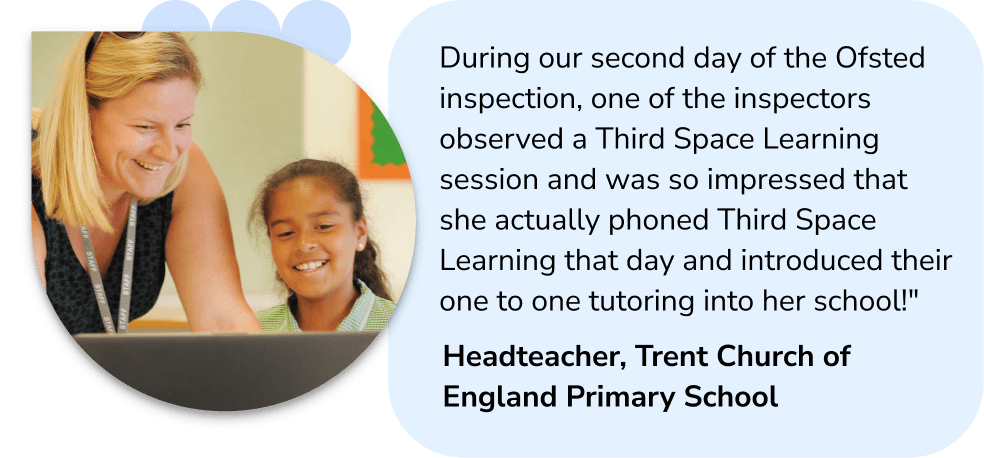
How can Third Space Learning support tutoring?
Every pupil deserves to feel confident in their maths lessons and prepared with strategies and tools to tackle new concepts and answer questions.
But, some pupils need more focused support than others to get there.
For over a decade, Third Space Learning has provided personalised tutoring to primary and secondary schools across the country.
Find out how Third Space Learning helps raise maths attainment in schools like yours through our AI maths tutoring with Skye.

READ MORE: How Does Ofsted Inspect Tutoring?
What happens after an Ofsted inspection?
Once the inspection is complete, inspectors write up an inspection report of their findings, including the overall rating the school will receive.
Ofsted sends schools a draft copy of the report to give feedback. This is mostly about whether there are any factual errors (e.g. the wrong number of pupils).
When does Ofsted publish reports?
Within 28 days of an inspection, Ofsted published the full report. You can find all full reports here: https://reports.ofsted.gov.uk/
Frequently asked questions
What are the four Ofsted ratings?
1. Oustanding
Outstanding schools provide the highest quality education and care for their children.
2. Good
A Good school provides for all their pupils’ educational needs and prepares them well for the next stage in their lives.
3. Requires Improvement
A school rated Requires Improvement provides an acceptable quality of education and care for children, but will have areas where they could improve.
4. Inadequate
If a school is rated Inadequate, it is failing to provide an acceptable quality of education and care for children and will need to make significant improvements immediately.
As of May 2024, Ofsted will publish sub-judgements for all past and future graded school inspections carried out under the Education Inspection Framework, as well as the overall inspection grade.
What is the Ofsted ranking scale?
1. Outstanding
2. Good
3. Requires Improvement
4. Inadequate
What is the Education Inspection Framework?
The EIF sets out Ofsted’s inspection principles as well as detailed information on each of the four categories.
In 2019 Ofsted published an updated version of the EIF that introduced several new aspects to inspections.
One of the most important new ideas from the 2019 EIF were the Ofsted deep dive questions, in-depth looks at specific subjects that inspectors will decide on and inform schools of before the inspection begins.
However, according to Ofsted’s Chief Inspector, from September 2024, inspectors will no longer conduct subject deep dives during ungraded inspections. Instead, school leaders will have the opportunity to discuss their school’s strengths and areas for development with inspectors.
DO YOU HAVE STUDENTS WHO NEED MORE SUPPORT IN MATHS?
Skye – our AI maths tutor built by teachers – gives students personalised one-to-one lessons that address learning gaps and build confidence.
Since 2013 we’ve taught over 2 million hours of maths lessons to more than 170,000 students to help them become fluent, able mathematicians.
Explore our AI maths tutoring or find out about school tutors for your school.
